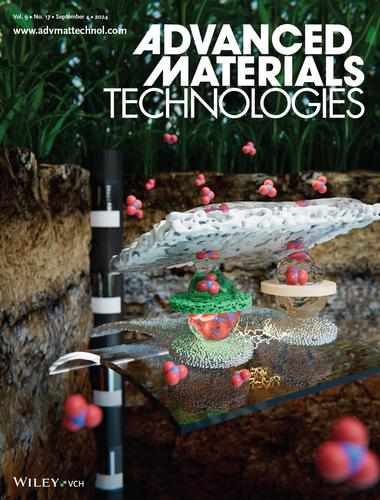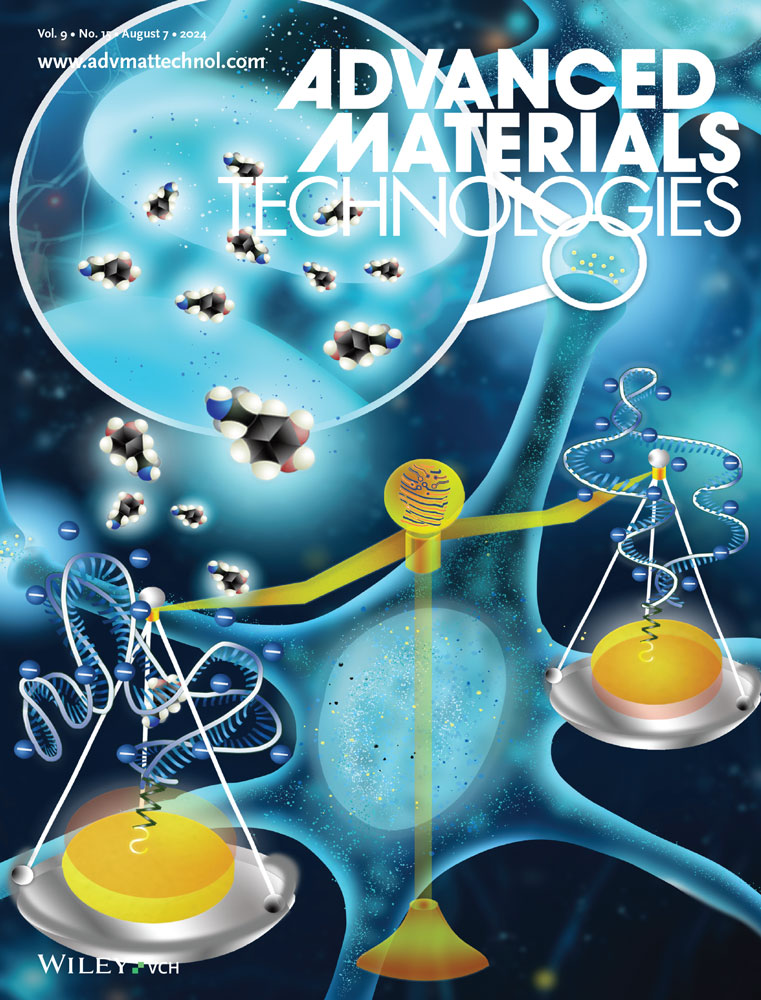通过亲水钝化层直接在土壤中检测硝酸盐的喷墨打印电位计传感器(Adv.)
IF 6.4
3区 材料科学
Q1 MATERIALS SCIENCE, MULTIDISCIPLINARY
引用次数: 0
摘要
喷墨打印电位传感器在第 2301140 号文章中,Joseph Andrews 及其合作者介绍了一种用于测量土壤中硝酸根离子的打印电化学传感器。通过亲水性多孔聚合物层,可以从土壤环境中提取含硝酸盐的溶液。该传感器的工作电极上有硝酸盐选择膜,参比电极上有质子交换膜。本文章由计算机程序翻译,如有差异,请以英文原文为准。

Inkjet Printed Potentiometric Sensors for Nitrate Detection Directly in Soil enabled by a Hydrophilic Passivation Layer (Adv. Mater. Technol. 17/2024)
Inkjet Printed Potentiometric Sensors
In article number 2301140, Joseph Andrews and co-workers present a printed electrochemical sensor for measuring nitrate ions in soil. A hydrophilic and porous polymer layer enables the extraction of nitrate laden solutions from soil environments. The sensor is functionalized with a nitrate selective membrane on the working electrode and a proton exchange membrane on the reference electrode.
求助全文
通过发布文献求助,成功后即可免费获取论文全文。
去求助
来源期刊

Advanced Materials Technologies
Materials Science-General Materials Science
CiteScore
10.20
自引率
4.40%
发文量
566
期刊介绍:
Advanced Materials Technologies Advanced Materials Technologies is the new home for all technology-related materials applications research, with particular focus on advanced device design, fabrication and integration, as well as new technologies based on novel materials. It bridges the gap between fundamental laboratory research and industry.
 求助内容:
求助内容: 应助结果提醒方式:
应助结果提醒方式:


